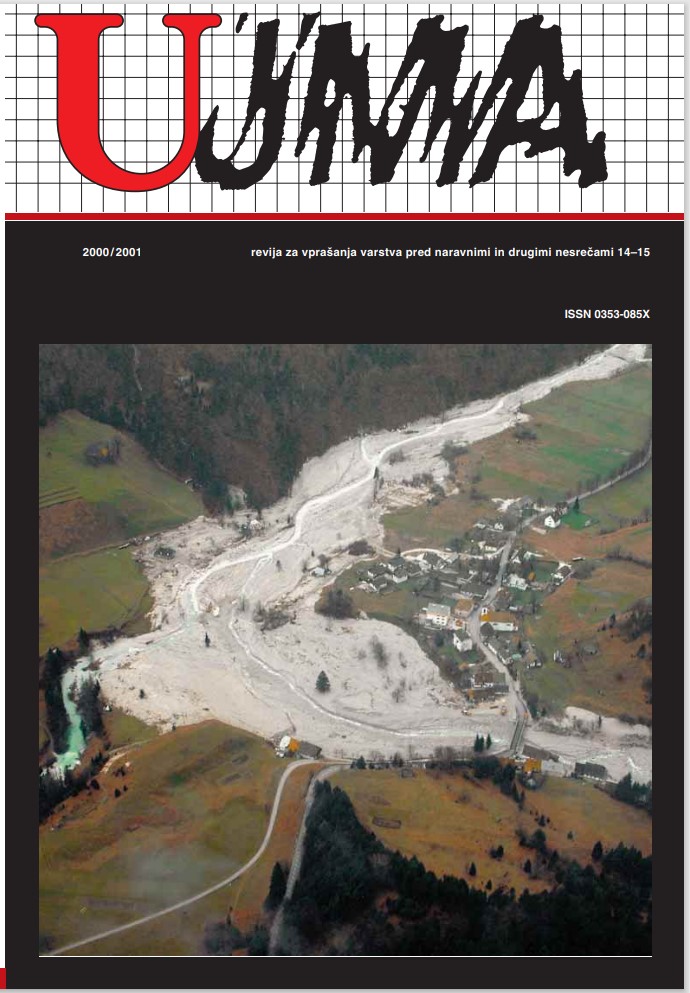ANALYSIS OF LANDSLIDE AND ITS REHABILITATION
Abstract
In November 2000, a huge landslide was triggered below Stože and, for two days, traveled a distance of 4 km as debris flow to the village of Log. Approximately 1,000,000 m3 of material was displaced from an altitude of 1400 to 1600 m and mainly deposited at an altitude of 630 m. The consequences of the landslide, which, by its size (materials from an area of over 25 hectares were displaced and deposited over more than 15 hectares) is one of the largest in Slovene history, are catastrophic. 7 persons lost their lives, 6 residential and farm buildings were destroyed, and another 23 buildings in the village of Gornji Log were more or less damaged. With 2 bridges ruined, the road connection between Bovec and Predel, which is of vital importance to the area, was cut off. The road to Mangart was partially or fully buried beneath earth or destroyed, and considerable damage was also caused to power supply facilities. Direct damages are estimated at almost 2 billion SIT. According to tests carried out so far, it is estimated that there is still approximately 3 million m3 of unstable material in the landslide area, which represents a potential danger of landslide recurrence. The elimination of consequences and the measures needed to ensure the safe return of inhabitants to their homes depend on the results of site investigations being performed in the landslide area.
References
Končno poročilo Ekspertne skupine za geotehniko, imenovane s strani poveljnika Civilne zaščite Mirana Bogataja, po predhodni seznanitvi Vlade Republike Slovenije, januar 2001.
Downloads
Published
Issue
Section
License

This work is licensed under a Creative Commons Attribution-NonCommercial-NoDerivatives 4.0 International License.
The articles are made available to the public under Creative Commons Attribution-NonCommercial-NoDerivatives 4.0 International (CC BY-NC-ND 4.0).


